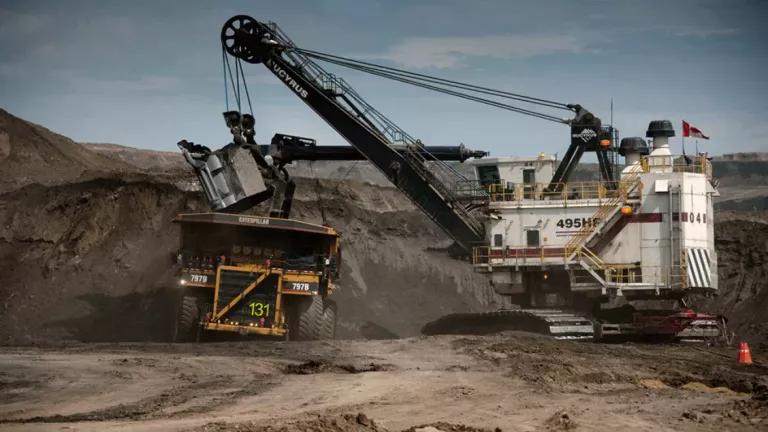EPA: Keystone Fails on Climate
In a letter to the State Department, the U.S. Environmental Protection Agency warns of the pipeline's hefty carbon contribution.

Photo: Shell
If President Obama decides to reject Keystone XL once and for all, he’ll know the U.S. Environmental Protection Agency has his back. In a letter to the State Department on Monday, the agency wrote that the completion of the tar sands oil pipeline from Alberta to the Gulf Coast would “significantly” increase greenhouse gas emissions.
The president has often said the project’s impact on climate change would weigh heavily in his decision on whether to tell pipeline-builder TransCanada to get off our lawn. “Our national interest will be served only if [Keystone] does not significantly exacerbate the problem of carbon pollution,” the president said in a 2013 speech at Georgetown University.
Well, according to the EPA, our national interest should be quaking in its red-white-and-blue boots.
“Development of oil sands crude represents a significant increase in greenhouse gas emissions,” the agency wrote. Tar sands emit 17 percent more carbon than other types of crude, the EPA noted, and building KXL would be like putting an additional 5.7 million cars on the road each year. Over the pipeline’s 50-year lifespan, that would mean spewing 1.37 billion extra tons of greenhouse gases into the atmosphere.
The State Department, which leads the national interest review process because the pipeline would cross an international border, also requested comments on KXL from the Pentagon and the Departments of Energy, Justice, Interior, Commerce, Transportation, and Homeland Security. Based on those statements, which were due yesterday, Secretary of State John Kerry will make a formal recommendation to the president. So far, only the EPA has publicly released its opinion.
The agency suggested that the State Department give “additional weight during decision-making” to the recent uncertainty of oil prices. Shipping oil by rail is more expensive than shipping by pipeline, and with the current low, low price of oil under $50 per barrel, the tar sands industry needs KXL more than ever to make a profit. If the oil slump continues, KXL’s construction would increase tar sands production—and carbon emissions—much faster.
Meanwhile, in Congress, Keystone proponents are pulling out all the stops to bypass the review process—which includes an assessment of the pipeline’s environmental impacts—by forcing a bill onto Obama’s desk. Last week, the GOP-led Senate got one step closer by approving legislation, which the House is expected to vote on next week. The president has already promised a veto.
After more than six years, this debate seems to have gone on as long as the would-be-could-be pipeline itself, but the saga is coming down to its final act. Now, in the denouement, the EPA has given Obama the ammunition he needs to administer the coup de grâce. Psst…Mr. President, that’s your cue.
This article was originally published on onEarth, which is no longer in publication. onEarth was founded in 1979 as the Amicus Journal, an independent magazine of thought and opinion on the environment. All opinions expressed are those of the authors and do not necessarily reflect the policies or positions of NRDC. This article is available for online republication by news media outlets or nonprofits under these conditions: The writer(s) must be credited with a byline; you must note prominently that the article was originally published by NRDC.org and link to the original; the article cannot be edited (beyond simple things such grammar); you can’t resell the article in any form or grant republishing rights to other outlets; you can’t republish our material wholesale or automatically—you need to select articles individually; you can’t republish the photos or graphics on our site without specific permission; you should drop us a note to let us know when you’ve used one of our articles.
The Uinta Basin Railway Would Be a Bigger Carbon Bomb Than Willow
How to Ditch the Biggest Fossil Fuel Offenders in Your Life
What Are the Solutions to Climate Change?